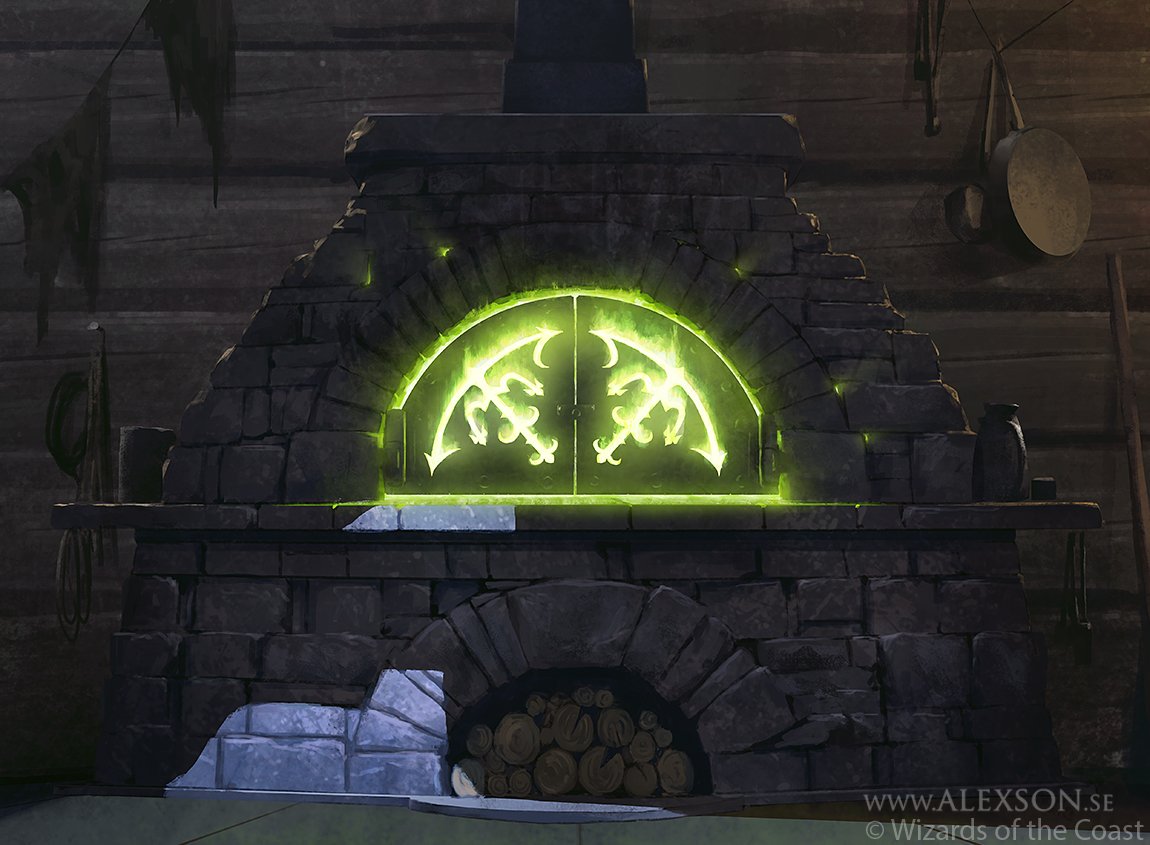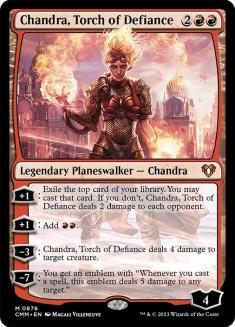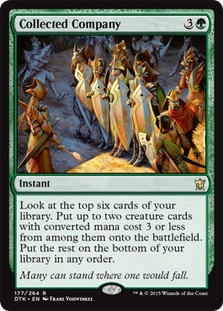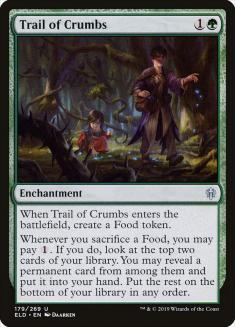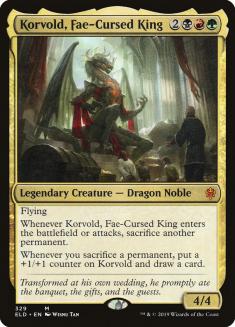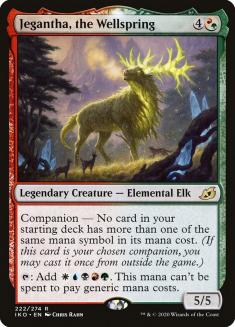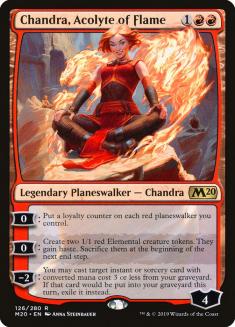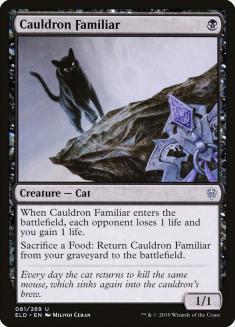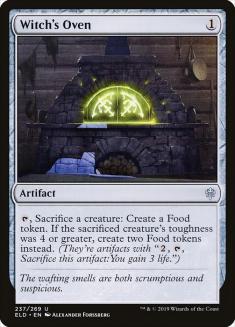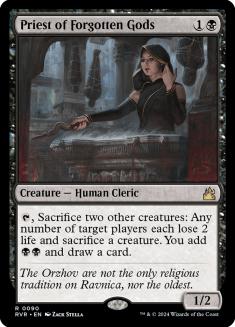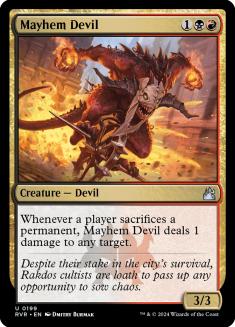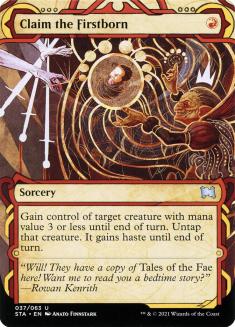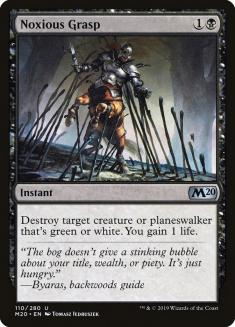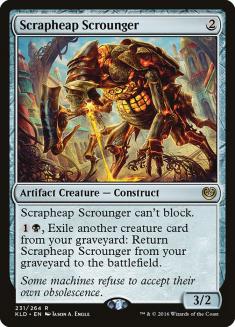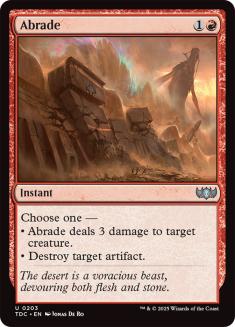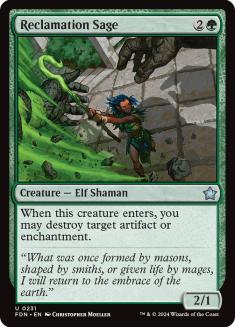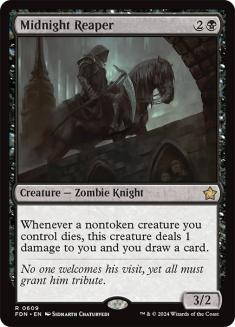In my mind, Historic has two best decks right now — Jund Sacrifice variants and Sultai Midrange variants. There are other decks that are certainly viable (Goblins, Auras, Paradox Engine, etc), but I think the Sultai and Jund strategies are a bit better than everything else. Which of the two archetypes you decide to play with to me is mostly a question of how well you believe you can predict the metagame; you can build your Sultai deck to beat anything (you can play a bunch of sweepers, Essence Scatter, Narset, Parter of Veils, Negates, splash for Yasharn, Implacable Earth or not, etc), but you cannot build it to beat everything, so you will have to do some predicting and you risk getting it wrong and having a bad deck for the tournament. Jund Sacrifice, on the other hand, is mostly going to be the same deck regardless of what you’re facing, so if you’re unsure what the metagame is going to look like, I think it’s potentially a better choice.
Personally, I do not trust my prediction skills at this time, so I prefer to play Jund Sacrifice. I also like the deck a little bit more because I think the Sultai mirror is an abomination and I would rather avoid playing that if possible.
This is the Jund Sacrifice deck I chose to play:
Creatures (25)
- 2 Scrapheap Scrounger
- 3 Midnight Reaper
- 4 Priest of Forgotten Gods
- 4 Dreadhorde Butcher
- 4 Mayhem Devil
- 4 Cauldron Familiar
- 4 Woe Strider
Lands (23)
Spells (12)

First, let me address some of the more frequent questions:
Why is this deck better than Rakdos Sacrifice?
The way I see it, the one argument to play Rakdos over Jund is that you have access to clean maindeck answers to Yasharn in the form of Chandra, Torch of Defiance, which you can’t really play in the Collected Company version. I saw some people playing Rakdos without Chandra and that doesn’t make much sense to me.
Even if you are playing Chandra in your Rakdos deck, I think Collected Company is just too good to give up. Mayhem Devil is your most important card in a variety of matchups (Mono-Red Goblins, Azorius/Orzhov Auras, the mirror), and having the ability to find it is worth a lot. I think the Jund version is better against everything across the board except for Yasharn decks, including the mirror, and you can get plenty of Yasharn answers after sideboarding, so I’m partial to playing green.
Why not play the slower, food-centric version?
Right now there are two different builds of Jund Sacrifice in Historic — one is the one I played, which is aggressively slanted with Dreadhorde Butchers and Collected Companies, and the other is the one slanted more towards control that’s aiming to win longer games with Trail of Crumbs and Korvold, Fae-Cursed King.
I think the Trail version is also better against Yasharn decks in Game 1, since it’s better against Yasharn specifically (you can play some amount of removal and Korvold often goes over the top of it), but overall I just don’t like that deck very much — I think it’s got too much air. Half your deck is mana sources, which makes you extremely reliant on Korvold and very vulnerable to cards like Essence Scatter and Aether Gust. On top of that, a lot of your hands are too reactive; for example, a hand of Gilded Goose, Thoughtseize, Witch’s Oven, Claim the Firstborn and three lands is a good hand, but you’re still not accomplishing anything and you need to topdeck one of your key cards, whereas a similar hand in the Company version would include at least creatures that can attack.
Should I really play Jegantha, the Wellspring?
My team and I actually discussed this for a long time, since there were some Jegantha naysayers, and I believe you should play Jegantha. It’s true that you don’t often bring it back and that when you do it rarely matters (as you win or lose the game independent of it), but the cost of one sideboard slot is extremely low. What would you play? An extra Abrade is probably my top contender, but that’s still a card that’s only going to be there in Games 2 and 3 and only against specific matchups. On top of that, it’s a card that you have to draw for it to make any difference. Jegantha is always going to be there regardless of what you’re playing against (unless you’re bringing in Chandra, Acolyte of Flame) and you don’t even need to draw it. A lot of the time it doesn’t matter but a 5/5 creature can be good in a stalled battlefield, and sometimes you need a creature to sacrifice to Witch’s Oven to start the chain again and it gives you the ability to do that. Throughout the tournament, having Jegantha won me two games against Rakdos Sacrifice where it just brickwalled my opponent’s Scrapheap Scroungers for many turns. I don’t think any single other sideboard card was responsible for two wins.
Why do you play Chandra, Acolyte of Flame? Isn’t that card a meme?
Chandra disables Jegantha when you bring it in but I think it’s worth it. The main reason the card is there is that against the Four-Color Midrange decks you really want to be able to remove their Yasharns, Elder Gargaroths, Nissas and Uros, so you want access to a lot of removal, but at the same time you can’t have all removal because they will grind you out if your hand is too reactive. With Chandra, you can rebuy your Noxious Grasps as well as your Thoughtseizes and Claim the Firstborns while making sure you keep your threat count relatively high. Chandra isn’t a major threat by itself but the tokens work surprisingly well with Priest of Forgotten Gods, Woe Strider, Korvold, Fae-Cursed King and Mayhem Devil (since they are sacrificed at the end of the turn).
The Matchups
All in all, this deck is fairly versatile. It’s an aggressive deck, capable of some very early wins if unopposed, but it’s also capable of controlling the battlefield quite well if they’re unable to kill your creatures. If they do manage to stabilize, you have the Cauldron Familiar + Witch’s Oven combo in the late-game. Scrapheap Scrounger, Midnight Reaper, Collected Company and Woe Strider give you a ton of staying power against sweepers, and Claim the Firstborn, Priest of Forgotten Gods and Mayhem Devil give you many ways of dealing with creatures. It’s up to you to examine the matchup, your draws and their draws and decide which way you want the game to go — sometimes you can afford to play slowly and bait out their sweepers and sometimes you just have to hope they don’t have them.
VS Sultai Midrange
I think Sultai Midrange is a slightly favorable matchup, because without Yasharn they can’t close the door on you very quickly, so you have more leeway to play around the sweepers. Claim the Firstborn is very good here, as they really need to Uro or Nissa you to close out the game.
Out:
In:
It might seem weird to sideboard out Claim the Firstborn, but you’re both bringing in more reactive cards, so it becomes a little bit worse. For example, if they’re killing all your creatures more often then you’re less likely to be able to use Claim to answer Nissa, as you won’t have three power to attack it with. Furthermore, they have Elder Gargaroth most of the time and you can’t Claim that.
After sideboarding, watch out for Cry of the Carnarium. It exiles creatures that were put in the graveyard earlier in the turn, so if they have that card make sure to sacrifice your Cauldron Familiar to Witch’s Oven on your turn — if it’s already in the graveyard then they can’t exile it, but if it’s on the battlefield they always will.
VS Four-Color Midrange
In this matchup you’re not favored — Yasharn really makes that big of a difference. In Game 1, an early Yasharn is almost unbeatable and a late Yasharn can win the game for them even if you’re significantly ahead. They could mulligan to five in Game 1 and keep three lands, Growth Spiral, and Yasharn and they would be big favorites. For this reason I tend to play less conservatively around sweepers (I can’t give them all the time in the world to draw Yasharn).
Out:
In:
I don’t hate the Cat/Oven combo versus them, but it’s weak to Yasharn and you need to take out something that will not make your Collected Companies awful. You could try to trim more things and keep some number of each combo piece, but they really are cards that get better alongside each other, so if I’m going to play two and two then I’d rather play zero of each.
After sideboarding, things improve a lot for you because you have a lot of ways of killing or discarding Yasharn as well as Korvold to potentially win the game through it. I think the sideboarded games actually favor you by a small amount, but the matchup overall is unfavorable.
VS Jund / Rakdos Sacrifice
The matchup against both these decks plays out very similarly. You’re both trying to do the same thing, but the versions with green are just better at it because of Collected Company. Claim the Firstborn is one of the most important cards in the matchup, so try to keep it in mind at all times — don’t tap your Witch’s Oven main phase if you don’t have another sacrifice outlet, for example.
Out:
In:
After sideboarding not much changes, except you have Korvold, Fae-Cursed King as a trump. The other versions with green will probably have that as well, but the Rakdos ones obviously won’t. Some people don’t like Reclamation Sage in this matchup, but I think Witch’s Oven is so important given its interactions with Claim the Firstborn on both sides that Sage is worth having even if that’s their only target (though some people will have Scrapheap Scrounger too).
VS Azorius / Orzhov Auras
This is your best matchup. In fact, this matchup is so good that I’m surprised people still played Auras at the event. They have no disruption for your creatures and they rely on pumping their creatures when your deck is full of removal.
Out:
In:
Sideboarding here is a bit awkward because you have so many cards against them that you risk leaving your deck dysfunctional. Still, their deck is so dependent on sticking a creature that having all those reactive cards rarely hurts you. Some people in our team wanted to cut all Collected Companies, since you’re very low on hits post-sideboard, but I think Mayhem Devil and Priest of Forgotten Gods are such key cards versus them that Company is still worth having. If you have all four, you need to cut more creatures, though, at which point they get worse, so I’ve been happy with two and two.
VS Mono-Red Goblins
This isn’t easy like Auras but it’s still a very good matchup, as they are a creature-centric combo deck without much removal. The difference is that they have one card that bails them out (Muxus, Goblin Grandee) and sometimes they can cast it quite quickly, and if they hit well they will then win the game. Their fair plan is almost never good enough against you, though sometimes Krenko, Mob Boss can live for a couple of turns and that will win the game as well.
Out:
In:
You get some more answers after sideboarding but overall the matchup doesn’t change very much (though they do usually get Abrades so be mindful of those).
Moving Forward
Moving forward, I think Jund Sacrifice is still a strong contender in Historic. Sultai Midrange and Four-Color Midrange were definitely the big winners from the Zendikar Rising Championship, which is both bad and good for you. It’s bad because you don’t want to play against Four-Color Midrange and that deck is obviously going to be more popular now, but it’s good because in a field with a lot of midrange decks, Sultai might be people’s weapon of choice since it has the edge in the mirror and that’s actually a matchup I think you’re favored in for the most part (though, like with anything else, Sultai can be built to be good against Sacrifice decks).
As for any changes to the deck, I honestly thought our build was very good. We had a healthy mix of proactive and reactive sideboard cards and good sideboard plans in most matchups. The one card that was a bit lackluster was Reclamation Sage. We opted to play a Sage over the third Abrade because it was more versatile — it’s good versus Auras and reasonable in the mirror but it’s also a good Collected Company hit versus decks like Azorius Control and Paradox Engine combos. In the end, the Sacrifice decks ended up being more popular than we expected, so I think replacing the Reclamation Sage for a third Abrade in the sideboard makes sense since that card is better there while also being good versus Goblins and Auras.
At this point in time, I think midrange decks are probably the most powerful things to be doing in the format. However, they’re forced to engage in an arm’s race against each other — do you play the build that is the best against the field (Four-Color) or do you play the build that is the best in the mirror (Sultai)? It’s not a great position to be in; it’s like playing Mono-Red in a field where you know a lot of people are going to be playing Mono-Red with four Chandra’s Defeats in the maindeck; you don’t want to play Chandra’s Defeat, since you think it’s bad, but you also know that you’ll be behind in the mirrors if you don’t. If you want to avoid this arm’s race, I think Jund Sacrifice is a very good deck to play, as it has game against mostly everything due to its aggressive nature while being very good against all creature-based decks.

